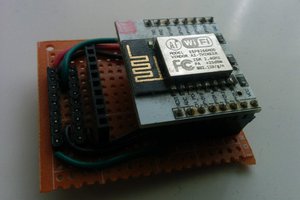Assumptions/Features of Minion Network
- Slaves
- I2C address is hardcoded.
- Ack is received form master and error is generated in case no Ack is received.
- Master
- Able to discover new joining slaves. (Doesn't have knowledge of slave addresses beforehand)
- Keep tracks of all the subscriptions and performs proper message delivery to all the slaves.
Assumptions/Features of Minion Modules
- Minions are able to pass power & I2C cable to each other.
- Each minion is modularized to be able to easily plug & unplug from existing system.
- Each minion is relatively cheap to create.
Simple Module Ideas using Minion Network
- Human Detector Minion (PIR sensor)
- publish("/human-detector", "{'data': 'timestamp'}"
- subscribe("/human-detector/config")
- Light Detector Minion
- publish("/light-sensor/analog-value", "{'photoresistorValue': '26'}")
- publish("/light-sensor/threshold-status", "{'isThresholdReached': 'true'}")
- subscribe("/light-sensor/config")
- Alarm Minion
- subscribe("/alarm-status")
- Button Minion
- publish("/button-press", "{'buttonPress': 'true'}"
- LED Minion
- subscribe("/led-status")
- Buggy Minion
- publish("/sound-recording-data", "{some-audio-buffer-data-here}"
- subscribe("/sound-recording-status")
- Battery Minion
- subscribe("/battery-on-off")
- publish("/battery-status", "{'capacity': '56'}"
- Tank Body Minion
- subscribe("/moving-direction")
- subscribe("/speed")
- Offline Storage Minion
- subscribe("/store-data")
- publish("/offline-storage-capacity")
- Wifi Minion (MQTT-Minion Net. Bridge)
- Minion Network
- subscribe("/up-to-date-subscription-list")
- publish("/request-subscription-list", "{}")
- publish("/some-existing-subscription-in-offline-net", "a-message-received-from-real-mqtt-network")
- MQTT Network
- publish("/some-existing-subscription-in-offline-net", "a-message-received-from-minion-network")
- subscribe("/all-of-the-existing-subscription-in-offline-net")
- Minion Network
Possible Projects Using Minion Network/Modules
- Simple home alarm system.
- Internet connect button. (Wifi Minion needed)
- Internet connected car. (Wifi Minion needed)

 Alexander
Alexander

 Michele Scaramuzzi
Michele Scaramuzzi